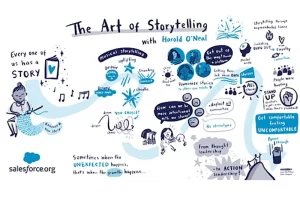
In customer support the unexpected often becomes the norm and guiding upset customers back to a place of calm is akin to an art form. These moments of tension—be it over a delayed package, a product not performing as expected, a bill that doesn’t quite add up, or simply a miscommunication—hold the power to reshape a customer’s view of a brand, sometimes with lasting consequences. Enter the nuanced world of de-escalation, where empathy, clear communication, and a knack for problem-solving transform potential negatives into unparalleled opportunities for building trust.
Understanding the Customer’s Melody
Each customer’s complaint, like a unique melody, plays to the rhythm of their expectations and experiences. Picture a scenario where empathy becomes the conductor’s baton, guiding the orchestra of interaction towards harmony.
A support representative, upon encountering a customer’s dissatisfaction, tunes into the underlying emotions with a phrase as simple yet profound as, “I understand why you’d feel this way, and it’s valid to feel upset. Let’s make this right together.” This approach doesn’t just acknowledge the customer’s feelings; it respects the narrative behind their frustration, setting the stage for a more receptive and collaborative problem-solving session.
Harmonizing Solutions
Beyond merely listening, the next movement in this symphony involves crafting solutions that resonate with the customer’s needs. Imagine a support agent who, after understanding the crux of the issue, offers not just a remedy but a choice of solutions, empowering the customer. “Would you prefer a replacement sent overnight, or would a refund better suit your needs?” This question underscores a commitment to resolve the issue in a way that best aligns with the customer’s preferences, thereby harmonizing the solution with the customer’s desires.
The Choreography of Communication
Effective de-escalation often resembles a carefully choreographed dance, where every step and turn matters. The initial response to a complaint sets the tone for the interaction. A well-considered phrase, such as, “Let’s walk through this together,” can be the first step in this dance, inviting collaboration rather than confrontation. It’s about moving in tandem with the customer, step by step, towards a resolution.
The Rhythm of Follow-Up
The dance doesn’t end with the issue resolved; a thoughtful follow-up is akin to the final bow, leaving a lasting impression. Imagine sending a personalized message a few days later: “I wanted to ensure you’re completely happy with how we resolved your issue. Is there anything more we can do for you?” This not only shows that the company values the customer’s satisfaction long-term but also reinforces the trust and rapport built during the initial interaction.
Crafting the Narrative of Resolution
Every de-escalation is a story of moving from conflict to resolution, and every customer wants to feel like the protagonist in a story with a happy ending. Encourage representatives to view these interactions as collaborative storytelling sessions. By saying, “Let’s write the next chapter in this together and turn the situation around,” they can shift the narrative from adversarial to cooperative, making the customer a partner in finding a resolution.
Ensuring a Satisfying Conclusion
The conclusion of the exchange should leave the customer feeling valued and heard. This might involve a gesture, like a custom discount on their next purchase, accompanied by a note saying, “We appreciate your understanding and patience as we worked through this together. Here’s something special for your next visit.” Such actions not only cement the positive outcome of the current interaction but also set the stage for continued engagement and loyalty.
Conclusion
Mastering the art of de-escalation is not merely a skill but a cornerstone for any customer support professional. It’s about listening with intent, responding with empathy, taking action, and ensuring contentment. In a landscape where customer experience reigns supreme, those who weave these principles into their fabric not only stand out but set the pace, fostering loyalty, satisfaction, and a legacy of success.





